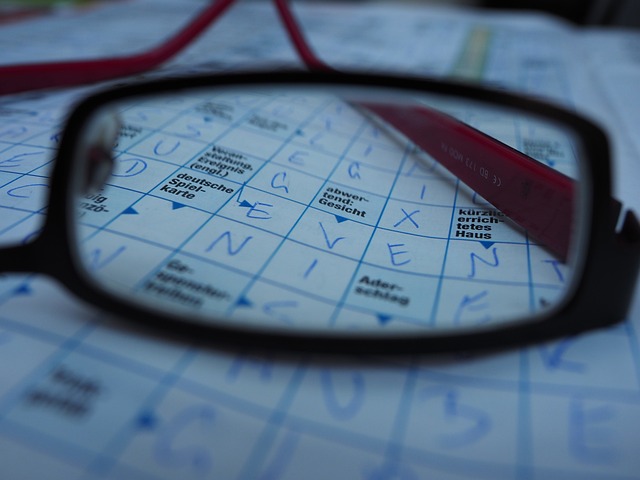Introduction
Have you ever found yourself lost in the world of words, where every clue is a puzzle waiting to be solved? If you’re nodding your head, then you’re in good company. Crossword enthusiasts, puzzle lovers, and word game aficionados alike have a special place in their hearts for the New York Times (NYT) crossword puzzles. Among these beloved brain teasers, the Joyous Laughter NYT Crossword stands out as a gem that promises not only a challenge but a hearty dose of fun.
In this guide, we’ll unravel the delightful intricacies of the Joyous Laughter NYT Crossword. From its rich history to expert-solving strategies, we’ll cover everything you need to know to master this unique puzzle. Whether you’re a seasoned solver or a curious beginner, read on to discover the joy of cracking the code behind this captivating crossword.
The History of NYT Crossword Puzzles
The New York Times crossword puzzle first appeared in 1942, and it has since become a staple for puzzle enthusiasts around the world. Created by Margaret Farrar, the initial puzzles were simpler compared to today’s standards. However, they laid the groundwork for what would become a cherished tradition.
Over the decades, the NYT crossword has evolved, incorporating more complex themes and sophisticated clues. It has attracted a loyal following, with solvers eagerly awaiting each day’s new challenge. The puzzle has grown to symbolize intellectual perseverance and a love for language, cementing its place in the hearts of many.
The Joyous Laughter NYT Crossword is a testament to this legacy, offering a blend of wit and challenge that keeps solvers coming back for more. Its unique theme sets it apart, making it a must-try for anyone looking to experience the best of what the NYT crossword has to offer.
An Inside Look at the Joyous Laughter NYT
The Joyous Laughter NYT Crossword isn’t just any puzzle; it’s a celebration of humor and wit. The theme revolves around clever wordplay and puns that elicit a smile—or even a laugh—from solvers. Each clue is crafted to challenge your thinking while providing a touch of amusement.
What makes this puzzle special is how the theme ties into the clues and answers. You’ll find that seemingly unrelated words connect in ways that are both surprising and delightful. For instance, a clue might play on double meanings or homophones, leading you to an answer that’s a pun or a joke.
Understanding the theme is key to solving the puzzle. Once you grasp the underlying humor, you’ll find it easier to crack the clues. The Joyous Laughter NYT Crossword invites you to think outside the box and enjoy the process as much as the solution.
Strategies for Solving the Joyous Laughter NYT
Approaching the Joyous Laughter NYT Crossword requires a blend of strategy and creativity. Here are some tips to help you conquer this delightful challenge:
Start with the Easy Clues
Begin by solving the straightforward clues. These can provide a foothold, allowing you to fill in parts of the grid and make connections to more complex answers.
Look for the Theme
Identify clues that seem to fit the theme of joyous laughter. These often involve wordplay, so think about puns, jokes, and double meanings.
Use the Crosses
When stumped on a clue, use the letters from intersecting answers to help. Sometimes, seeing a few letters in place can trigger the right answer.
Take Breaks
If you find yourself stuck, take a break and return to the puzzle later. A fresh perspective often helps you see clues in a new light.
Engage with the Community
Don’t hesitate to seek help from fellow solvers. Join forums and discussion groups where you can share insights and get hints.
By combining these strategies, you’ll find yourself not only solving the puzzle but also enjoying the process of uncovering each humorous twist.
Community Engagement
One of the joys of crossword puzzles is the sense of community they foster. Engaging with other solvers can enhance your experience and provide valuable insights. Here’s how to get involved:
Join Online Forums
There are numerous online forums and social media groups dedicated to NYT crossword puzzles. These communities are full of passionate solvers who share tips, discuss clues, and celebrate their successes.
Attend Crossword Events
Many cities host crossword puzzle events and competitions. Attending these can connect you with other enthusiasts and offer opportunities to learn from experienced solvers.
Share Your Experiences
Write about your solving experiences on blogs or social media. Sharing your insights and challenges can help others and create a sense of camaraderie.
By becoming an active member of the crossword community, you’ll find support, encouragement, and a shared love of puzzles that enriches your solving experience.
Beyond the Puzzle
The joy of solving crosswords doesn’t end with the puzzle itself. There are many ways to continue your engagement and deepen your appreciation for the craft:
Explore Puzzle Books
Many authors and editors publish crossword puzzle books that offer a variety of themes and challenges. These books can provide hours of entertainment and practice.
Watch Documentaries
Several documentaries explore the world of crossword puzzles, offering insights into their history, creation, and culture. Watching these can deepen your understanding and appreciation of the art form.
Try Other Word Games
Expand your puzzle-solving skills by trying other word games such as Scrabble, Boggle, or word searches. These games complement your crossword skills and provide additional intellectual stimulation.
By exploring these activities, you can keep the joy of puzzles alive and continually challenge yourself in new and exciting ways.
Conclusion
The Joyous Laughter NYT Crossword is a delightful blend of challenge and amusement, offering a unique experience for crossword enthusiasts, puzzle lovers, and word game aficionados. By understanding its theme, employing strategic solving techniques, and engaging with the vibrant crossword community, you can unlock the full potential of this captivating puzzle.
We hope this guide has provided you with valuable insights and practical tips to enhance your solving experience. Now, it’s your turn to share your experiences and join the conversation. Happy puzzling!
Frequently Asked Questions (FAQs)
1. What makes the Joyous Laughter NYT Crossword different from other crosswords?
The Joyous Laughter NYT Crossword is unique due to its emphasis on humor and clever wordplay. Each puzzle contains puns and jokes woven into the clues, making the solving process not only a challenge but also a source of amusement.
2. How do I get started with solving crosswords if I’m a beginner?
To start solving crosswords, familiarize yourself with common crossword conventions, like abbreviations and word patterns. Begin with easier puzzles or themed crosswords and gradually progress to more challenging ones as your skills improve.
3. Can I solve the Joyous Laughter crossword without any prior experience?
Absolutely! The Joyous Laughter NYT Crossword welcomes solvers of all experience levels. While prior experience may help, the unique theme encourages creativity and thinking outside the box, making it accessible for beginners.
4. Where can I find help if I’m stuck on certain clues?
If you find yourself stuck, there are many resources available. Online forums and social media groups for crossword enthusiasts are great places to seek hints and discuss challenging clues with fellow solvers.
5. Are there any resources to improve my crossword skills?
Yes, there are numerous resources available to enhance your crossword-solving abilities. Consider exploring puzzle books, attending crossword events, or watching documentaries that delve into the history and intricacies of crossword puzzles.





